I recently finished an autobiography of a little known Canadian artist: Emily Carr, entitled: Growing Pains. Emily was Canada’s equivalent of Mary Cassatt, at least in terms of era, European training and singular focus. But Cassatt never left us with such an articulate journaling of her struggle. I learned of Carr when in the Northwest of Canada last year. I’d already loved the amazing modernist landscapers of the Northern wilds called the Canadian Seven; but Carr’s name, or her work, is not usually included in general groupings amongst them.
To have come from the provincial west of Canada, not far removed from pioneering times — to endure the scoffing of family and the pursuit of suitors for her singular desire to study — then to travel to San Francisco, London and Paris so that she could get art training — and to live through Victorian attitudes, poor housing and bad health while working hard is Emily’s life. She was spirited, rebellious, sensitive and diligent and for a good portion of her mid-life she fell back in discouragement, running a boarding house back in British Columbia. It was later in life when she was recognized and included by Lawren Harris. He was one of the Seven, and insisted on including her in some exhibits back in eastern Canada. More important is the record of his thoughtful mentoring of her progress by mail. Her own articulate words tell this tale.
She says early on, having discovered her love of the woods as important to her voice: “sketching outdoors was a fluid process, half looking, half dreaming…as much longing as labour…these space things asked to be felt not with fingertips but with one’s whole self”. Then later after Harris’ encouragement: “…help was a little notebook I carried in my sketch sack and wrote in while intent on my subject. I tried to word in the little book what I wanted to say…I stopped grieving.” Lawren responded: these “represent vital intentions…unusually individual and (are) soaked with what you are after more than you realize…then we approach the precincts of Great Art—timeless—the Soul throughout eternity in essence.”
So, mentored myself by her words and his, I have started easing back into what I’m after in my own onging sketchbook. Here’s one recent entry.

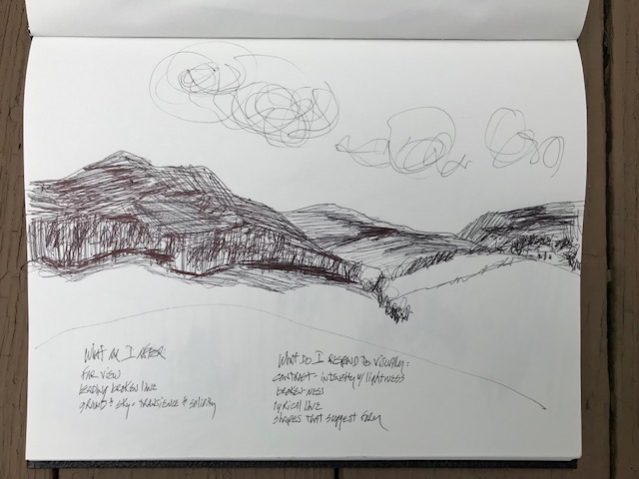
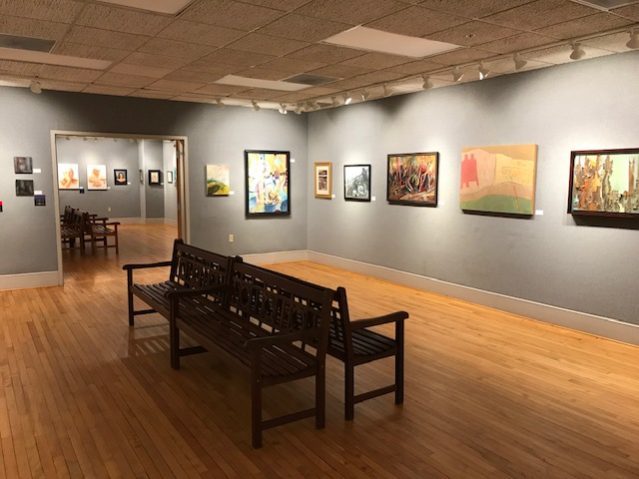
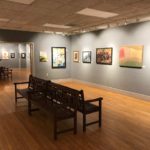
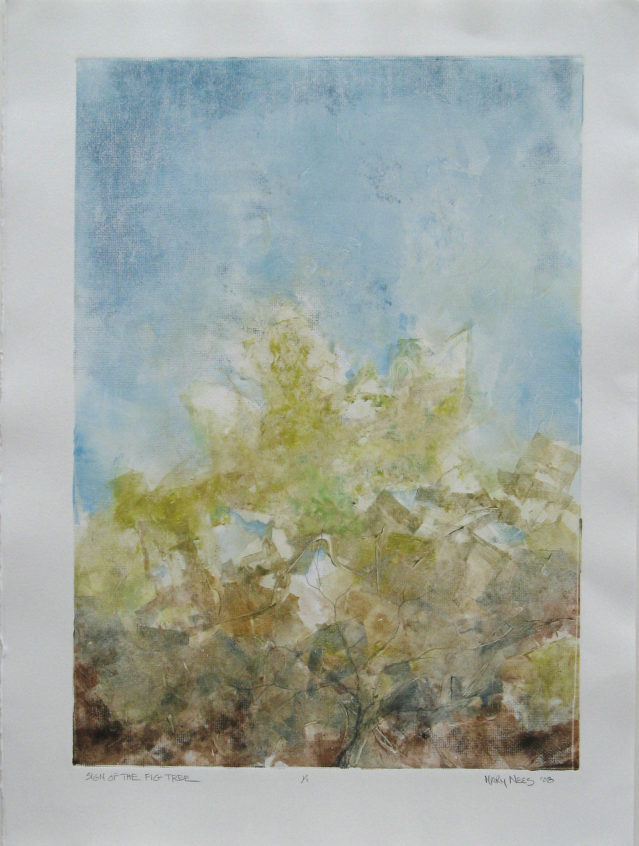

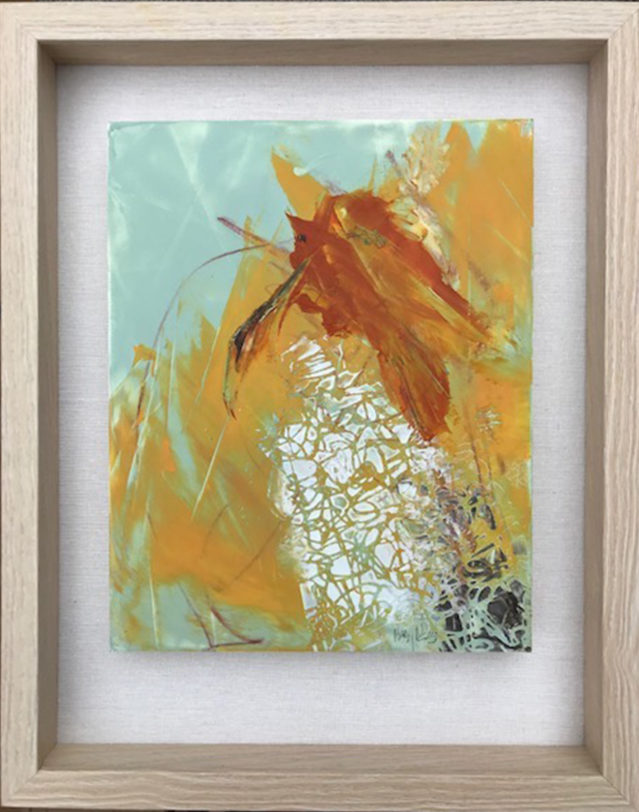
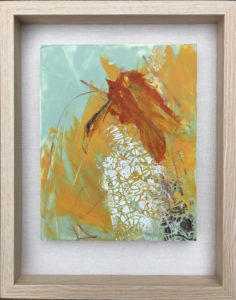 “Hope is the thing with feathers — that perches in the soul” Emily Dickinson, who penned this sweet line, knew a thing or three about meaningful hope. Hers was a buoyant expression, all the more poignant because she was equally aware of the hardness of her time/place and of her own internal struggle. Her poetry is rich for this reason: real, but outward even as she felt the confines of her tiny upper room.
“Hope is the thing with feathers — that perches in the soul” Emily Dickinson, who penned this sweet line, knew a thing or three about meaningful hope. Hers was a buoyant expression, all the more poignant because she was equally aware of the hardness of her time/place and of her own internal struggle. Her poetry is rich for this reason: real, but outward even as she felt the confines of her tiny upper room.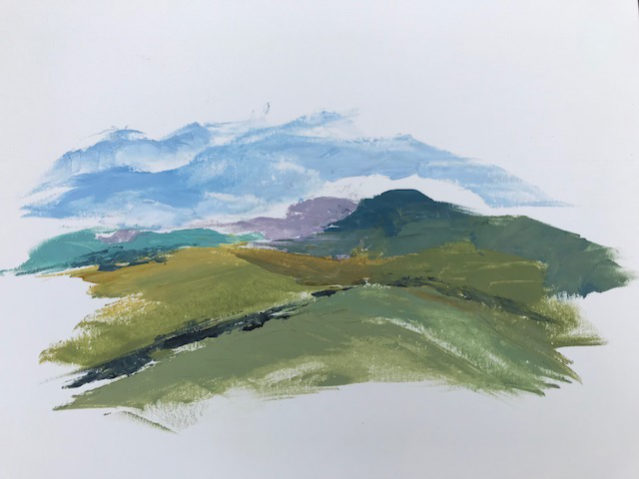
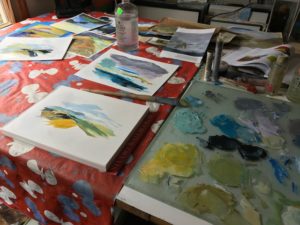 Yesterday in studio I worked up a palette of hues in oil, building from a photo I’d saved of an arctic scene in National Geo. You can see that here if you look closely at my messy table. I mixed up a set of replicated hues, pleasing together, and then added notes of my own with them, before I had any idea what I would do myself with this color grouping.
Yesterday in studio I worked up a palette of hues in oil, building from a photo I’d saved of an arctic scene in National Geo. You can see that here if you look closely at my messy table. I mixed up a set of replicated hues, pleasing together, and then added notes of my own with them, before I had any idea what I would do myself with this color grouping.
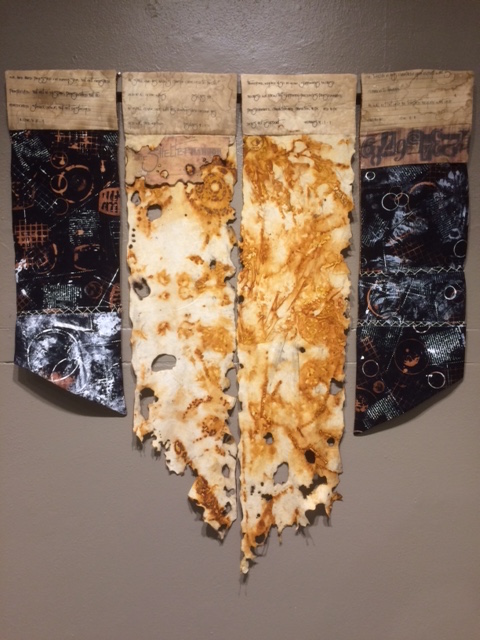
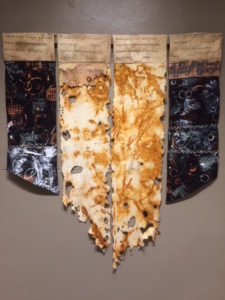
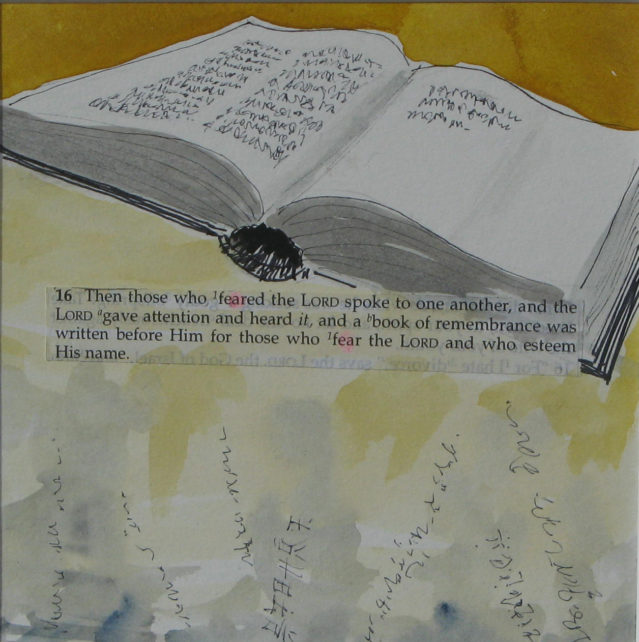
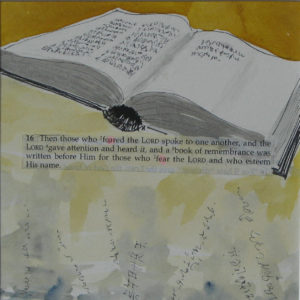 Another sketch from my
Another sketch from my 

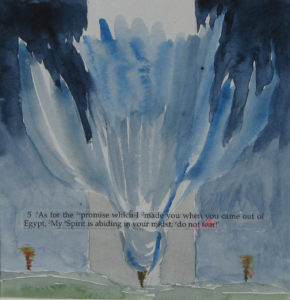
 We’re preparing. And since visuals speak so powerfully to me, I painted a symbol on our front door. Similar to any other sign, one has to stop here and think. Strange things require some investigation to understand what’s really going on. People who know me already are primed for surprises. My engineer looked tentatively, bemused at the gleam in my eyes as to what I’d done now. One of my daughters just smiled at her weird mom. I got out some red paint, and researched which branches in my backyard would more closely resemble the hyssop used in Exodus. When the Israelites were told to paint blood on the lintel and posts of their doors right before their great rescue it must have been a truly weird act of faith. But the
We’re preparing. And since visuals speak so powerfully to me, I painted a symbol on our front door. Similar to any other sign, one has to stop here and think. Strange things require some investigation to understand what’s really going on. People who know me already are primed for surprises. My engineer looked tentatively, bemused at the gleam in my eyes as to what I’d done now. One of my daughters just smiled at her weird mom. I got out some red paint, and researched which branches in my backyard would more closely resemble the hyssop used in Exodus. When the Israelites were told to paint blood on the lintel and posts of their doors right before their great rescue it must have been a truly weird act of faith. But the 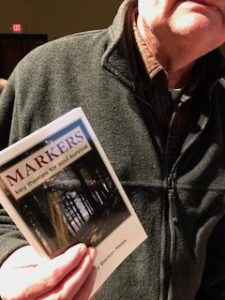
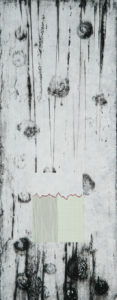 I showed them some pieces like this one, “Time and Mercy” where the chaos is falling down all around the inner life. But there on the inside is the mark of a heartbeat, and the recording of time. There’s a history that is undeniable, part of the fabric that cannot be changed. There’s a span ahead yet unknown. But in this present moment I can breathe and pause. This is the potential moment where beauty is born. For right now I can lift my head because the evidence of love is still shining through for those who are eager for it.
I showed them some pieces like this one, “Time and Mercy” where the chaos is falling down all around the inner life. But there on the inside is the mark of a heartbeat, and the recording of time. There’s a history that is undeniable, part of the fabric that cannot be changed. There’s a span ahead yet unknown. But in this present moment I can breathe and pause. This is the potential moment where beauty is born. For right now I can lift my head because the evidence of love is still shining through for those who are eager for it.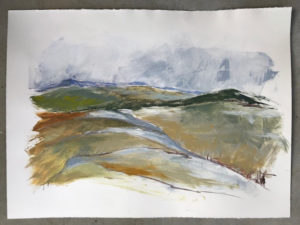 cam. It’s lived so slow from our angle. We move here on the ground at a snail’s response to what is happening second by second in the heavenlies. My sky here is active, for that’s where the real drama is being directed. The land only reflects the weather patterns and the light working above it. I live on the ground, held by gravity, where time creeps sometimes agonizingly slow. I don’t like that slowness, for there’s so much that needs to change down here, so much I long for from the only One who can bring us justice and peace. Humans and their leaders so disappoint me! He said He’d return, why is He taking so long!?
cam. It’s lived so slow from our angle. We move here on the ground at a snail’s response to what is happening second by second in the heavenlies. My sky here is active, for that’s where the real drama is being directed. The land only reflects the weather patterns and the light working above it. I live on the ground, held by gravity, where time creeps sometimes agonizingly slow. I don’t like that slowness, for there’s so much that needs to change down here, so much I long for from the only One who can bring us justice and peace. Humans and their leaders so disappoint me! He said He’d return, why is He taking so long!?